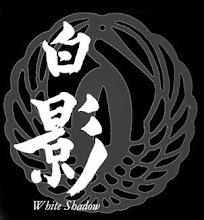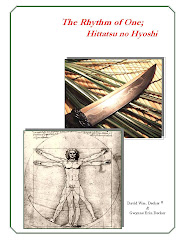While I am working on the drawings for part II don’t forget to check out our White Shadow Security website for great prices on custom tactical knives and Hanwei swords at http://www.whiteshadowsecurity.com/ The Spartan Blades knives, Vipers and ITACS are terriffic fighting knives and we still have a few Cobras available.
Sunday, September 27, 2009
Saturday, September 12, 2009
On The Edge of Functionality, Part 1
How does a knife cut? I suppose that sounds like a stupid question! OK then explain it to me. How does a knife’s edge sever solid materials and divide atoms? We can attempt to resolve that question later, for right now let’s talk about how differently shaped blades perform.
Reason would suggest that a curved blade will always out-cut a straight one. If that is so, then why will a high quality German longsword with a straight tapered blade cleave targets as cleanly as a gently curved katana? Explain that to me and we’ll be getting somewhere. I go into greater detail about this in my next book but let’s give it some thought. So, I’ll give you three good examples to consider.
Example #1 is a tanto made by a man named Morris. It is a quarter inch thick slab of steel ground to a fine, but absolutely straight, edge. My first impression of this knife was that you could pry open a bank vault with it but it would be a reluctant cutter. By golly it cuts pool noodles cleanly. I have never touched up the edge and it had seen some use prior to my buying it. Another thing about this knife is that the handle is also straight, which makes the knife swing like a tire iron. But it still cuts.

Example #2 is a mini-barong shaped knife that Blackhawk™ calls the Tatang. The Tatang blade is broad but flat ground and given a coarse black coating of some sort. I would rate this as a moderately curved blade. Does it cut? Does Superman wear a cape? This relatively inexpensive, commercially made knife cuts like there’s no tomorrow. It is one of the few knives that I have been able to make clean yoko giri (horizontal cuts) with. The first time I did yoko giri I amazed myself. The handle shape increases the cutting power but that is a topic for another post.
Example #3 illustrates a knife with an extreme curve. While not as extreme as a Derespina karambit or my Laci Szabo Kamaitachi, it still has a very radical curve. This knife is by far the sharpest of the three. It is chisel ground and razor sharp. Made by D.J. Urbanovsky this is one wicked fighter. The interesting thing is, I have a terrible time cutting with it! Yeh, I have a problem cutting pool noodles with this knife. No it is not the knife’s fault.
It all comes down to something, which for a lack of a better term, I call approach angle. This is the angle at which the user delivers the blade relative to the target. I know there are a lot of angles, which one am I talking about. Let’s assume that all of my cuts are at 30 degrees off the vertical, like doing tameshigiri. The approach angle I am talking about is related to the way the knife is positioned in your hand and the angle of your wrist. It’s a bit complicated so I’m going to post this for now and let you think about it. In the meantime I will try to make a drawing that illustrates what I consider the ideal approach angle for different blade shapes. So think about it and we’ll get back to this topic shortly. When we do I’ll also explain how the curvature of the blade on our Cobra is, by happenstance, right at the limits of functionality.
Reason would suggest that a curved blade will always out-cut a straight one. If that is so, then why will a high quality German longsword with a straight tapered blade cleave targets as cleanly as a gently curved katana? Explain that to me and we’ll be getting somewhere. I go into greater detail about this in my next book but let’s give it some thought. So, I’ll give you three good examples to consider.
Example #1 is a tanto made by a man named Morris. It is a quarter inch thick slab of steel ground to a fine, but absolutely straight, edge. My first impression of this knife was that you could pry open a bank vault with it but it would be a reluctant cutter. By golly it cuts pool noodles cleanly. I have never touched up the edge and it had seen some use prior to my buying it. Another thing about this knife is that the handle is also straight, which makes the knife swing like a tire iron. But it still cuts.

Example #2 is a mini-barong shaped knife that Blackhawk™ calls the Tatang. The Tatang blade is broad but flat ground and given a coarse black coating of some sort. I would rate this as a moderately curved blade. Does it cut? Does Superman wear a cape? This relatively inexpensive, commercially made knife cuts like there’s no tomorrow. It is one of the few knives that I have been able to make clean yoko giri (horizontal cuts) with. The first time I did yoko giri I amazed myself. The handle shape increases the cutting power but that is a topic for another post.

Example #3 illustrates a knife with an extreme curve. While not as extreme as a Derespina karambit or my Laci Szabo Kamaitachi, it still has a very radical curve. This knife is by far the sharpest of the three. It is chisel ground and razor sharp. Made by D.J. Urbanovsky this is one wicked fighter. The interesting thing is, I have a terrible time cutting with it! Yeh, I have a problem cutting pool noodles with this knife. No it is not the knife’s fault.

It all comes down to something, which for a lack of a better term, I call approach angle. This is the angle at which the user delivers the blade relative to the target. I know there are a lot of angles, which one am I talking about. Let’s assume that all of my cuts are at 30 degrees off the vertical, like doing tameshigiri. The approach angle I am talking about is related to the way the knife is positioned in your hand and the angle of your wrist. It’s a bit complicated so I’m going to post this for now and let you think about it. In the meantime I will try to make a drawing that illustrates what I consider the ideal approach angle for different blade shapes. So think about it and we’ll get back to this topic shortly. When we do I’ll also explain how the curvature of the blade on our Cobra is, by happenstance, right at the limits of functionality.
Subscribe to:
Posts (Atom)








